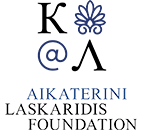Caria (115 Subjects)
Caravan.
Coins of Caria, historical region in Asia Minor.
The Temple of Zeus at Euromus, ancient city near modern-day Milas, Asia Minor.
Plan of the Temple of Zeus at Euromus, ancient city near modern-day Milas, Asia Minor.
Details from the Temple of Zeus at Euromus, ancient city near modern-day Milas, Asia Minor.
Details from the Temple of Zeus at Euromus, ancient city near modern-day Milas, Asia Minor.
Details from the Temple of Zeus at Euromus, ancient city near modern-day Milas, Asia Minor.
Lance tournament in Asia Minor.
View of Byblis Spring and Maeander valley, Asia Minor.
Plan of the Temple of Venus at Aphrodisias.
Inscriptions. Fig. 1,2. Inscriptions from the Temple of Jupiter [Beit Mery]. Fig. 3. Inscription from the church of St. Demetrius [Thessaloniki]. Fig. 4, 5. Inscription from the Temple of Aphrodisias. Fig. 6. Inscription from the church of [Church of Panagia Chalkeon (Thessaloniki)]. Fig. 7. Inscription from the gate of Aphrodisias. Fig. 8. Inscription from the altar at Auriol. Fig. 9. Altar at Auriol. Fig. 10 & 11. Details of altar at Auriol.
The ancient city Tyrrha, Asia Minor.
Triopian promontory and the ruins of Cnidus, as they appear at the distance of two leagues; taken from the S.W. looking towards the N.E. in sailing from Cos to Rhodes.
Topographic survey of the ruins of Cnidus showing the isthmus and the two harbours.
The plain of the Maeander in Ionia.
Map of port near Marmaris in Turkey.
Map of the port of Bozburun near ancient Cnidos, on Datça peninsula, Turkey.
Map of the port of ancient Knidos on cape Triopion or Cavo Crios, on Datça penisula, Turkey.
Map of the coast around Bodrum in the bay of Kos.
Map of the port of Bodrum.
Map of the coast from Gündoğan to Torba, at the northern part of Bodrum peninsula.
Map of bay between Akbük and Güllük in Turkey.
View of the Castle of Bodrum, or Castle of Halicarnassus.
Arch in Milas, known today as Baltalı Kapıyı. Capitals from Milas (Α, Β). Base of column (C).
View, plan and architectural elements of the Temple of Augustus in Milas.
Roman monumental tomb in Milas, known today as Gümüşkesen. Capitals of the monument (Α, Β). Plan of the monument (C).
Fig. 1. View of Bodrum (anc. Halicarnassus). In the background the Castle of Halicarnassus, also called Castle of St. Paul. Fig. 2. View of the ruins of the Temple of Ares in Bodrum (anc. Halicarnassus).
Fig. 1. Part of stele from Bodrum (anc. Halicarnassus). This stele was most probably at the site of the Mausoleum of Halicarnassus. Fig. 2. Metopes from the Mausoleum of Halicarnassus. These Metopes, on which scenes from the Amazonomachia are depicted, are some of the very few elements of the Mausoleum preserved today, because the locals used them to cover several parts of the sewer system. Inscription from the Castle of Halicarnassus, also know as Castle of Saint Paul.
View of Marmaris in Asia Minor. In the background the Castle of the city, constructed by the Knights Hospitaller.
View of the port of Marmaris.































